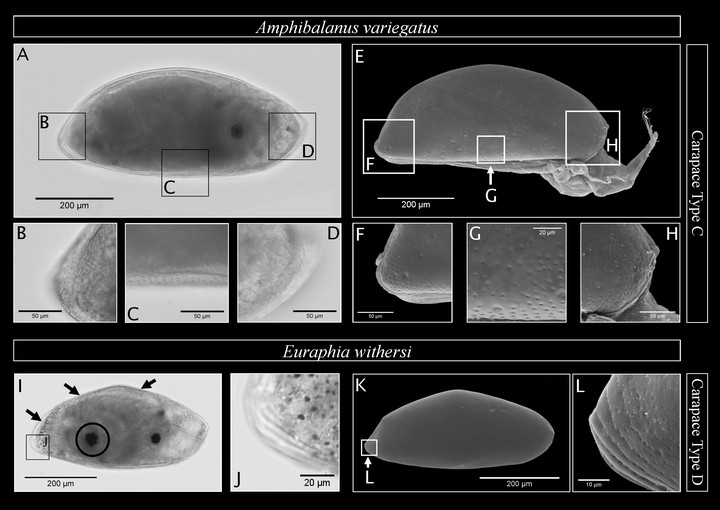A combined morphological and molecular approach in identifying barnacle cyprids from the Matang Mangrove Forest Reserve in Malaysia: essentials for larval ecology studies

Abstract
Identification of larval mesoplankton is essential to the study of the supply-side ecology of marine benthic or sessile organisms, such as barnacles. Combined morphological and molecular identifications of wild-caught barnacle cyprids from Matang Mangrove Forest Reserve (MMFR), Malaysia were studied based on mitochondrial 12S-rRNA gene sequences of the unidentified larvae and identified adults. Six species of barnacle adults and cyprids had matched DNA sequences. These included Fistulobalanus pattellaris, Fistulobalanus sp., Amphibalanus reticulatus, Amphibalanus variegatus, Amphibalanus amphitrite, and Euraphia withersi. Morphological characters of the identified cyprids were described, and used to develop a morphology-based classification tree. Carapace sculpturing pattern on the cyprids was the most important morphological discriminator. Preliminary analysis of the diversity of barnacle cyprids in MMFR showed that the dominant species could be morphologically classified with high accuracy.